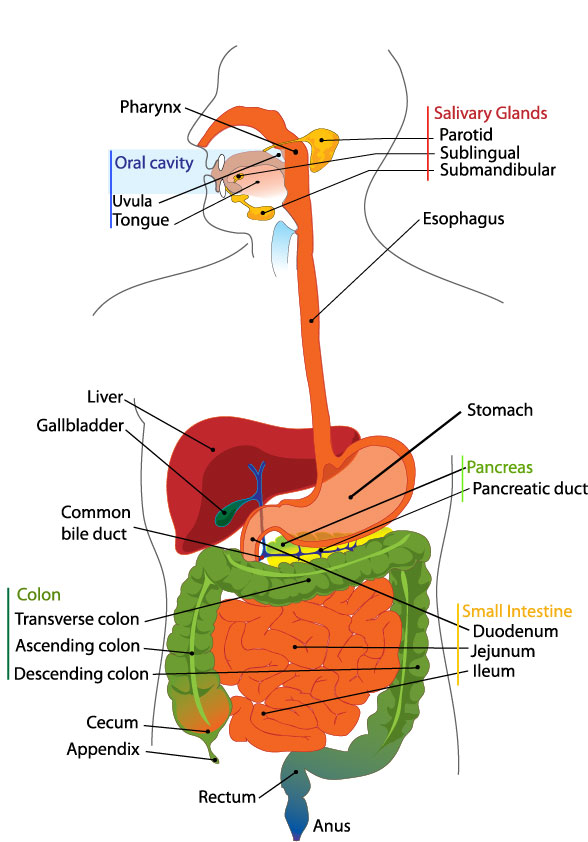(Advanced Reading) Scientists build a stomach in the lab!
Human stomach developed in a lab
PARIS, October 29, 2014 - Scientists built the world's first "mini-stomachs" -- these are tiny clusters of human gastric tissue that could allow them to conduct detailed research into cancer, ulcers and diabetes.
Called gastric organoids, these are buds of cells that are "a miniature version of the stomach", the researchers said.
They were made from pluripotent stem cells which were developed into gastric cells.
Youthful and versatile, pluripotent stem cells have excited huge interest as a source for transplant tissue grown in a lab.
 Spot the stomach: A Human Digestive System. Credits: Creative Commons, Wikimedia
But the field has encountered many problems, led by the challenge of getting cells to "differentiate", or become cells for specific organs.
Spot the stomach: A Human Digestive System. Credits: Creative Commons, Wikimedia
But the field has encountered many problems, led by the challenge of getting cells to "differentiate", or become cells for specific organs.
- The scientists first identified the chemical steps that occur during embryonic development, when cells differentiate into the specific types that form the stomach
- These steps were then replicated in a Petri dish so that pluripotent stem cells developed into endoderm cells, the building blocks of the respiratory and gastro-intestinal tracts.
- These were then biochemically nudged into becoming cells of the antrum, the stomach region that secretes mucus and hormones
Still at a preliminary stage, the organoids are a long way from being replacement tissue or a fully-fledged stomach.
Early tests on mice, though, suggest they could one day be a "patch" for holes caused by peptic ulcers.
And, as "mini-stomachs," they also provide a testbed for studying diseases such as cancer, diabetes and obesity, the team said in a press release.
"Up until now, there's been no good way to study stomach diseases in humans,"
said Jim Wells, a researcher in developmental biology at the Cincinnati Children's Hospital Medical Center in Ohio.
"The human stomach is very different than the stomach of other animals. The different cells and their structure and arrangement in our stomach tissues in a dish were virtually identical to that that we would find in the stomach normally."
Credit: AFP
Hello Whiz!
You can register to get full access.
Members get access to thousands of stories, videos, quiz, games and a lot of fun stuff. And that's not all! Get reward points, downloads and get featured on The Whiz Times
Already a member ? Please Login
 Spot the stomach: A Human Digestive System. Credits: Creative Commons, Wikimedia
But the field has encountered many problems, led by the challenge of getting cells to "differentiate", or become cells for specific organs.
Spot the stomach: A Human Digestive System. Credits: Creative Commons, Wikimedia
But the field has encountered many problems, led by the challenge of getting cells to "differentiate", or become cells for specific organs.




